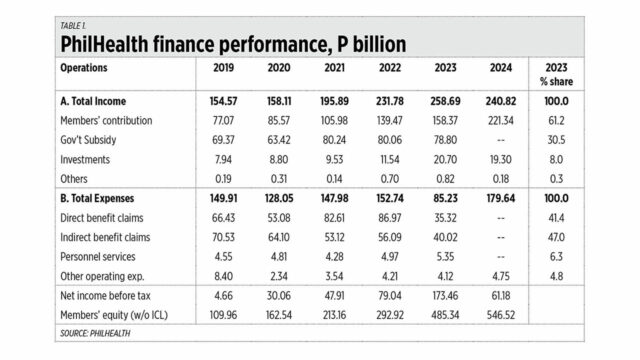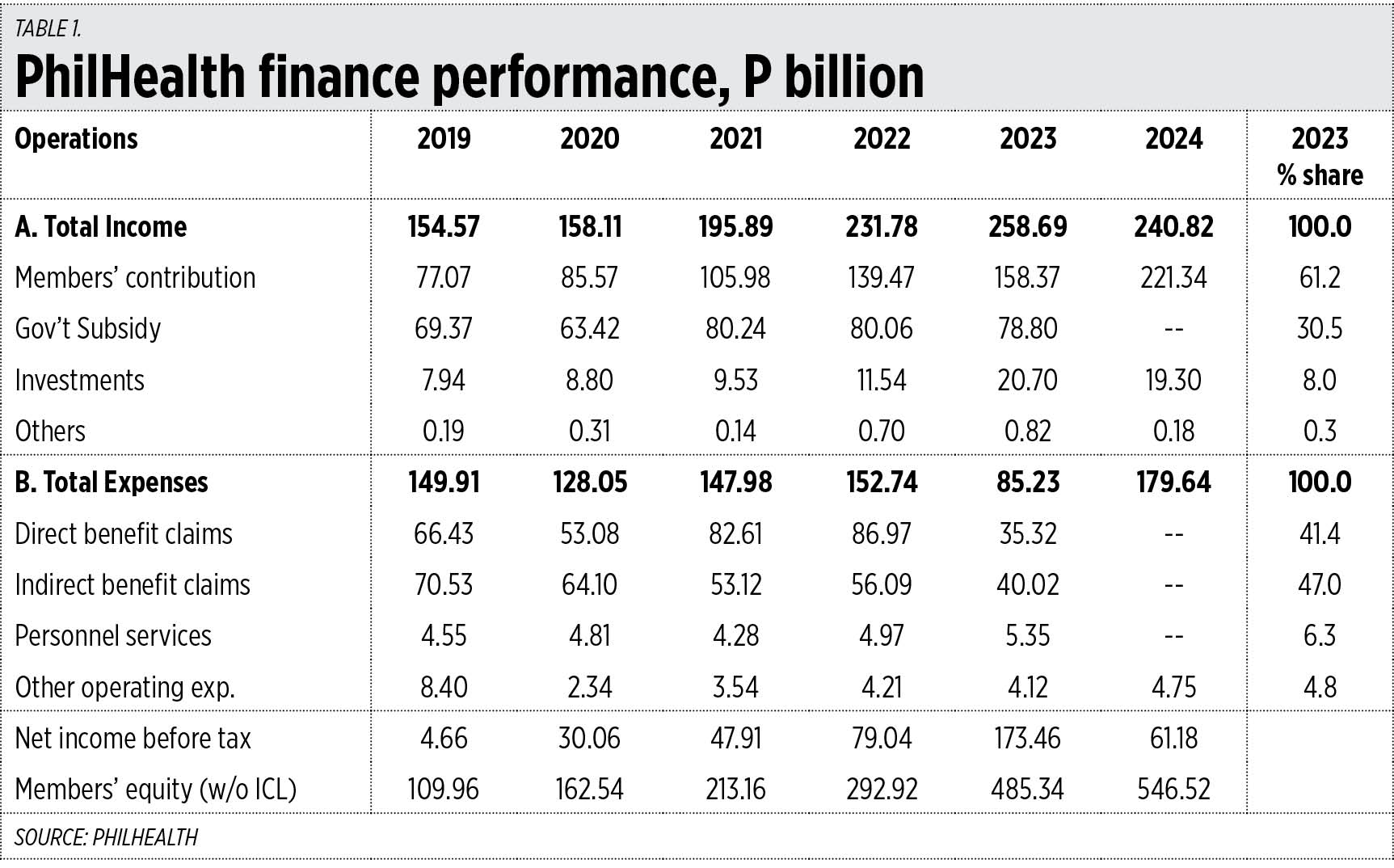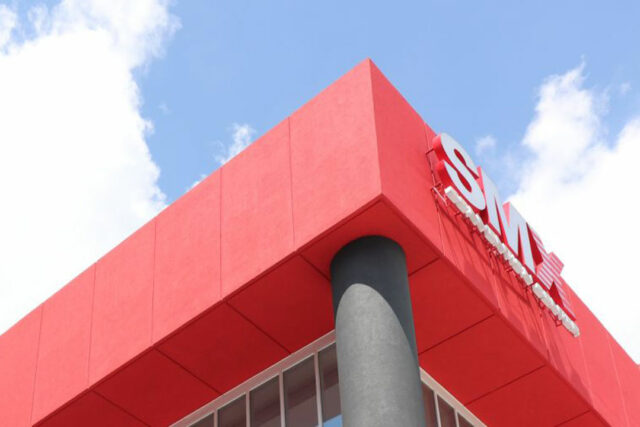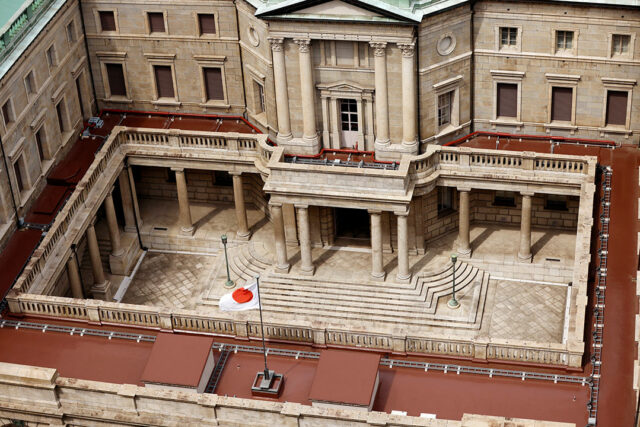President Ferdinand Marcos, Jr. remains firm in his stand that he will not allow the International Criminal Court (ICC) to investigate the “war on drugs” of former president Rodrigo Duterte. He maintains that the Philippines can resolve the issue under its “well-functioning justice system.” The episodes below glaringly show the Philippine justice system is malfunctioning badly.
THE ALICE GUO EPISODE
On Aug. 19, Senator Risa Hontiveros disclosed that, based on information provided to her by the National Bureau of investigation (NBI), Bamban, Tarlac Mayor Alice Guo is out of the country. She was able to leave despite being the subject of an immigration lookout bulletin order (ILBO) due to a high-profile Senate investigation into her alleged involvement in illegal activities traced to a Philippine offshore gaming operator hub and questions about her citizenship and eligibility as municipal mayor.
Miss Guo, said to have faked Philippine citizenship to run for mayor of Bamban, left the country on July 18 reportedly for Denpasar, Indonesia, then proceeded to Kuala Lumpur, Malaysia and subsequently flew to Singapore with her siblings, Sheila Guo and Wesley Guo, on July 21. She returned by ferry to Indonesia on Aug. 18.
She has been since July 18 the subject of an arrest warrant issued by the Senate due to her refusal to face the Senate committee on women, children, family relations and gender equality. The committee is investigating her supposed involvement in the illegal POGO hub that was raided in Bamban where she is the mayor. The NBI having established that Guo’s fingerprints matched those of Chinese citizen Guo Hua Ping, Solicitor General Menardo Guevarra filed on July 29 a quo warranto petition before a Manila court seeking to nullify Alice Guo’s election as mayor of Bamban for her being a Chinese citizen.
On Aug. 12, Ombudsman Samuel Martires ordered the dismissal of Mayor Guo from service for her violation of Philippine laws. The Ombudsman had firmly established that Guo owns a 7.9-hectare property hosting two POGOs — Hongsheng Gaming Technology, Inc. and Zun Yuan Technology, both of which were found to be engaged in human trafficking, torture, and cyber scams including that involving cryptocurrency.
On Aug. 14, Bureau of Internal Revenue (BIR) Commissioner Romeo D. Lumagui, Jr. filed a criminal case for tax evasion against Alice Guo and others. The criminal case stemmed from Guo’s not paying capital gains tax and documentary stamp tax.
THE PASTOR APOLLO QUIBOLOY EPISODE
At around 5:27 a.m. last Saturday morning, Philippine National Police (PNP) Region XI personnel under the command of Police Brigadier General Nicolas Torre III entered the Kingdom of Jesus Christ (KOJC) compound in Buhangin District in Davao City to serve an arrest warrant on KOJC leader Pastor Apollo Quiboloy.
According to the live report by DWPM/TeleRadyo Serbisyo, as many as 2,000 policemen were deployed at KOJC. That is equivalent to two Army battalions or one regiment. Video clips of the operation showed the policemen equipped with basic law enforcement tools — short firearms, batons, radios, body armor, and helmets.
Just the same, Pastor Quiboloy was able to evade arrest. Hundreds of Quiboloy’s followers formed a barricade outside the compound, making it difficult for the policemen to enter. Policemen had to use ladders to get inside. Still, they failed to find their prey.
This is the second time the PNP failed to arrest Quiboloy. On June 11, heavily armed units of the PNP Special Action Force (SAF) and Criminal Investigation and Detection Group (CIDG) operatives barged into several compounds owned by Quiboloy to serve arrest warrants for him and his accomplices, Ingrid Canada, Pauline Canada, Inteng Canada and Jackie Roy. They failed to catch their quarries.
Quiboloy has three standing arrest warrants for child and sexual abuse issued by the Davao City Regional Trial Court and human trafficking issued by a Pasig City court. The cases are non-bailable. The Supreme Court transferred the cases from Davao City, the pastor’s hometown, to Quezon City so that witnesses can testify freely. The arrest warrants are different from the pending arrest warrant issued by the Senate in connection to Quiboloy’s refusal to attend Senate hearings on the sexual abuse allegations that hound him and his church leaders.
THE GERARD BANTAG EPISODE
A manhunt for Gerald Bantag, former director-general of the Bureau of Corrections has been underway since July 2023 but the PNP has yet to catch the fugitive. Bantag is implicated in the brazen murder of radio broadcaster and journalist Percival Mabasa. Mabasa, who went by the name Percy Lapid on his radio show Lapid Fire, had aired allegations of corruption against Bantag on his late-night radio program.
The law enforcement authorities claim to have tracked down Bantag’s whereabouts, but they are taking precautions in arresting the man as he had vowed not to be captured alive. Department of Justice spokesman Mico Clavano said, “We hope to do this in the most peaceful manner.”
Specially trained and heavily armed men were sent to arrest Pastor Quiboloy. When that operation failed, 2,000 men were deployed to catch the elusive religious sect leader. That too failed. To capture an alleged cold-blooded killer, peaceful ploys will be employed.
THE ANDRES BAUTISTA EPISODE
Former Commission on Elections chairman Andres “Andy” Bautista and three executives of the voting machine company Smartmatic were indicted by a US federal grand jury in Florida on Aug. 8 for allegedly taking bribes from Smartmatic, which provided the voting machines for the country’s 2016 elections. The indictment alleges that between 2015 and 2018, the Smartmatic executives caused at least $1 million in bribes to be paid to Bautista.
The alleged crime is related to the 2016 Philippine elections and involved the chairman of the Commission on Elections, yet the charges were filed by the Justice department of a foreign government in that country’s court of law. Our own Justice department saw nothing wrong in the business relations between Bautista and Smartmatic.
OTHER EPISODES
I cited in a previous column other episodes that show the broken down condition of country’s justice system.
There is the case of the four policemen who were found guilty of homicide for the killing of Luis Saldana Bonifacio and his son Gabriel during an alleged illegal drug operation.
Kristina Conti of the National Union of Peoples’ Lawyers (NUPL) said no public prosecutor participated actively in the prosecution of the case. NUPL asked for and was granted authority as private prosecutors, trying this case on their own. They built this case without any material assistance from the Justice department, police, or government agencies.
There is also the case of the Internal Affairs Services (IAS) of the Philippine National Police (PNP). The House of Representatives Committee on Human Rights grilled the IAS for not filing criminal charges against policemen involved in “tokhang” operations that resulted in deaths during President Rodrigo Duterte’s “war on drugs.” Republic Act No. 8551 mandates the IAS to investigate and adjudicate administrative cases against erring PNP personnel. IAS Director General Brigido Dulay admitted that the IAS had not filed any charges.
THE CONCLUSION
I can only conclude that President Marcos does not want to throw Rodrigo Duterte under the ICC bus because Tatay Digong might get back at Bongbong by spilling the beans. Philippine politics is replete with stories of political ally falling from grace and hitting back at ungrateful friend.
When Defense Secretary Juan Ponce Enrile fell from grace, he revealed that his ambush was faked to justify President Ferdinand Marcos, Sr. imposing martial law. When Chavit Singson was cast out of the jueteng pot, he identified President Joseph Estrada as the jueteng king himself. When Makati mayoralty aspirant Ernesto Mercado was eased out of the Jejomar Binay political camp, he exposed the sins of the Binays. When Patricia Cruz became estranged from husband Andy Bautista, she bared husband’s hidden wealth.
BBM has many secrets that RRD knows.
Oscar P. Lagman, Jr. has been a keen observer of Philippine politics since the early 1950s.























